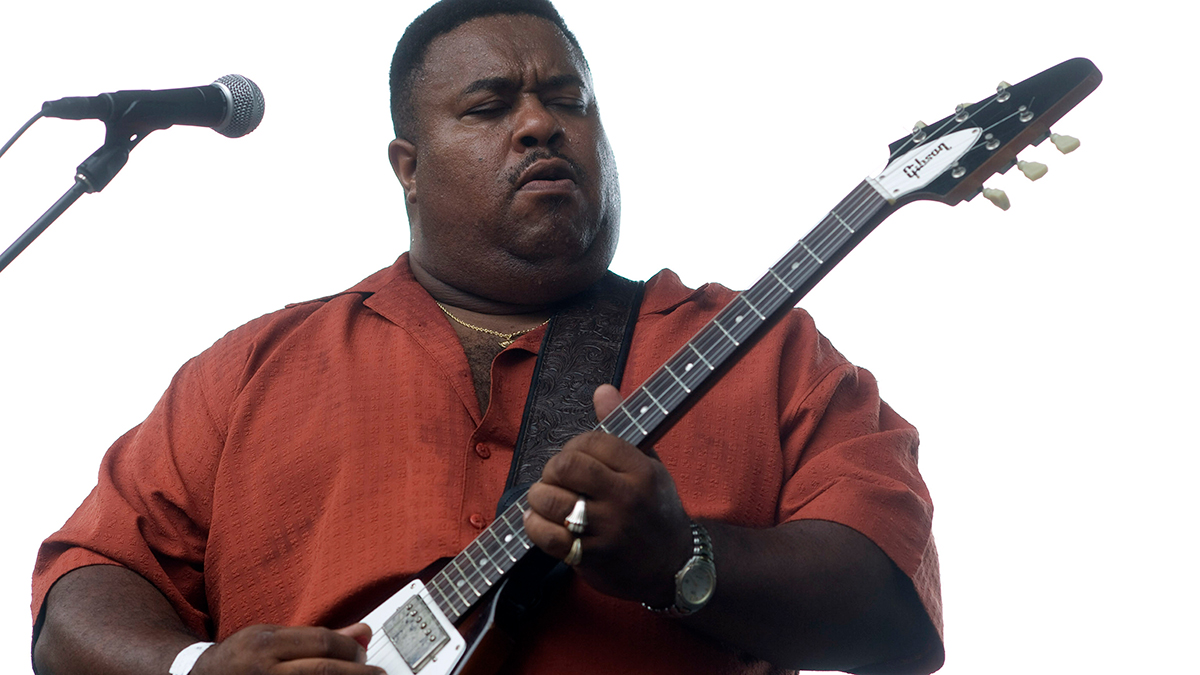Hugh Cornwell: “I can’t fathom what the attraction is about a relic guitar. It’s battered and beaten up, and suddenly it’s 10 times the price?”
The ex-Stranglers guitarist confesses to being a bona fide Tele addict and talks about the business of buying and selling gear, including a peach of a deal on a ’64 Silvertone

Prolific, iconoclastic, and as he reveals here in this tell-all confessional about a life spent buying electric guitars, a collector of affordable Fender Telecasters, Hugh Cornwell helped change the shape of punk and post-punk in 16 years with The Stranglers.
With his 10th solo album, Moments of Madness, out October 21, Cornwell sat down with Guitarist for the latest installment of Bought & Sold, where he tracks his career through guitars past and present, and tackles two of the biggest philosophical questions of our time – cheap electric guitar and top-notch guitar amp, or high-end electric guitar and cheap amp? Humbuckers or single-coils?
What was the first serious guitar you bought with your own money?
“Well, it was actually a bass because I started off playing bass. And after learning to play on a homemade one, I then saved up and got a Höfner violin bass – you know, a Paul McCartney special. But as far as a guitar goes, it was a Fender Tele. I remember going into a shop in Sweden and I tried a Gibson Les Paul and a Fender Telecaster.
I found the Les Paul very, very heavy, much heavier than the Tele, and it seemed very unwieldy as well
“Of the two, I immediately went for the Fender; I found the Les Paul very, very heavy, much heavier than the Tele, and it seemed very unwieldy as well. It just wasn’t flying while I was playing it, you know? I felt it was very leaden. But the Fender seemed to fit my personality. I just felt better playing it.
“I mean, now I’m a complete Fender Tele man. I actually collect Teles, as long as they’re not too expensive, emotionally heading for Mexican [Fenders] because they’re very good.”
What was the last guitar you bought and why?
All the latest guitar news, interviews, lessons, reviews, deals and more, direct to your inbox!
“It was a blue Made-in-Mexico Tele. I got it outside Manchester and a friend of mine picked it up for me. And then I had the blue [scratchplate] fitted, so it’s a completely blue top. If it’s a black one, I want it all black. If it’s white, I want it all white. Then you get the shape of the guitar coming through and, when you look at it, it becomes more of an aesthetic object.
“I’m sort of collecting Teles in all the colors of the rainbow, but it’s very hard to find pink, orange, purple and green Teles. I’ve been looking for a long time, and I want to add them to my collection. But they’ve got to have rosewood necks because I don’t like maple necks. It’s easier to see what I’m doing with rosewood.”
What’s the most incredible find or bargain you’ve ever had when buying a guitar?
“It was a 1964 Silvertone that I bought in America in the 1980s. Cheap. Probably cost me no more than $100. I haven’t upgraded it or tried to renovate it because it’s an antique, you know what I mean? I’m even worried about changing the strings on it.
I’m sort of collecting Teles in all the colors of the rainbow, but it’s very hard to find pink, orange, purple and green Teles
“The case had an amplifier and a speaker in it. It came with the original case and so I got the whole thing for less than $100. I couldn’t believe it. So that’s, I think, my prized possession and it’s locked away in a vault along with my other guitars.”
What’s the strongest case of buyer’s remorse you’ve ever had after buying a guitar?
“I think I’ve been quite lucky. I mean, my biggest disappointment was that I bought a Made-in-Japan Tele and hated it. I got rid of it. I couldn’t hang on to it, I just didn’t like the sound. It was too brash and it had no subtlety to it.”
What’s your best guitar-buying tip?
“Be careful of the description. I’m interested in buying Fenders and sometimes in the description it will say it’s a Fender, when in fact it isn’t. It’s a ‘parts’ Fender, which has been made up from different bits that don’t all belong together, like a hybrid. I want the guitar that came out of the factory, with the body and the neck and the pickups – because that’s the one they put together. And that’s the one that was intended to be out there. So I’d be very careful to check the origins.”
I came up from a sort of blues-y background and I just love that single-coil blues sound
When was the last time you stopped to stare in a guitar shop window or browse online, and what were you looking at?
“Well, I’m constantly looking for these different color Teles. But I’ll tell you one thing that I stopped and looked at because I was scratching my head. It was one of these relics. I can’t fathom what the attraction is about a relic guitar. I mean, the guitar is made to look like it’s been used, and it’s battered and beaten up. And suddenly, it’s 10 times the price?
“What’s that all about? I mean, something’s messed up. So it’s not for me. I think I looked at a relic guitar because instead of being under 500 quid, it was over three grand and I thought, ‘What’s the appeal about that? Why would anyone want to buy that?’”
If forced to make a choice, would you rather buy a really good guitar and a cheap amp, or a cheap guitar and a high-end guitar amp?
“I think I’d go for the great guitar and a crap amp. Because I think it’s easier to make a great guitar sound good through a crap amp than trying to make a crap guitar sound good through a great amp. I’d rather have a great guitar than a great amp.”
If you could only use humbuckers or single-coils for the rest of your career, which would you choose and why?
“Well, there you go. I’m on single-coils. I mean, I came up from a sort of blues-y background and I just love that single-coil blues sound. I don’t know if I’m talking out of my ass in thinking that early blues didn’t have anything to do with humbuckers. I’m talking about the originals – the original blues generation. I just gravitate towards that kind of a sound.”
Do you have a favorite guitar shop and why?
“Yeah, there’s a great one, but I can’t tell you where it is in LA. I can’t remember, but it’s got a huge collection of guitars for sale. I went in to buy a Gibson Melody Maker and it was at a time when they were totally out of fashion and the guy said, ‘Just go downstairs, there are about 50 down there.’ And I went downstairs and there were literally 50 old Melody Makers, all sunburst.
“I just went through them and after about 10 or 15 I found a couple that were better than the others. I didn’t even have to go through the 50. They were dirt cheap – like 200 bucks or something for a ’60s Gibson Melody Maker! And now they’re quite sought after, aren’t they?
“So, anyway, that shop became my favorite shop and I also bought a Strat from there in the end. The shop’s still there. I just can’t remember the name… but it’s the most fantastic guitar shop in the world. It’s great.”
- Moments of Madness is out October 21 via His Records.
With over 30 years’ experience writing for guitar magazines, including at one time occupying the role of editor for Guitarist and Guitar Techniques, David is also the best-selling author of a number of guitar books for Sanctuary Publishing, Music Sales, Mel Bay and Hal Leonard. As a player he has performed with blues sax legend Dick Heckstall-Smith, played rock ’n’ roll in Marty Wilde’s band, duetted with Martin Taylor and taken part in charity gigs backing Gary Moore, Bernie Marsden and Robbie McIntosh, among others. An avid composer of acoustic guitar instrumentals, he has released two acclaimed albums, Nocturnal and Arboretum.

